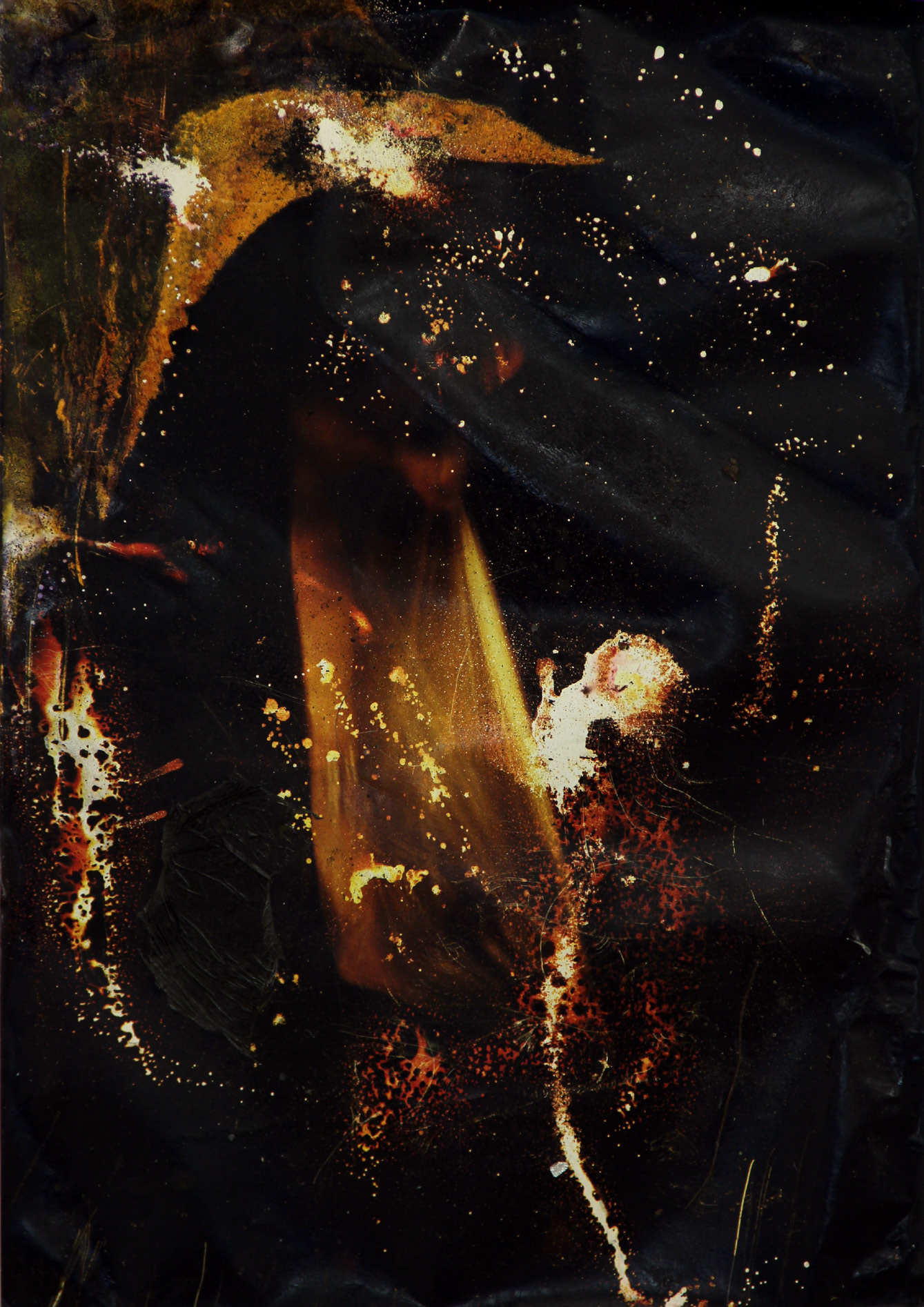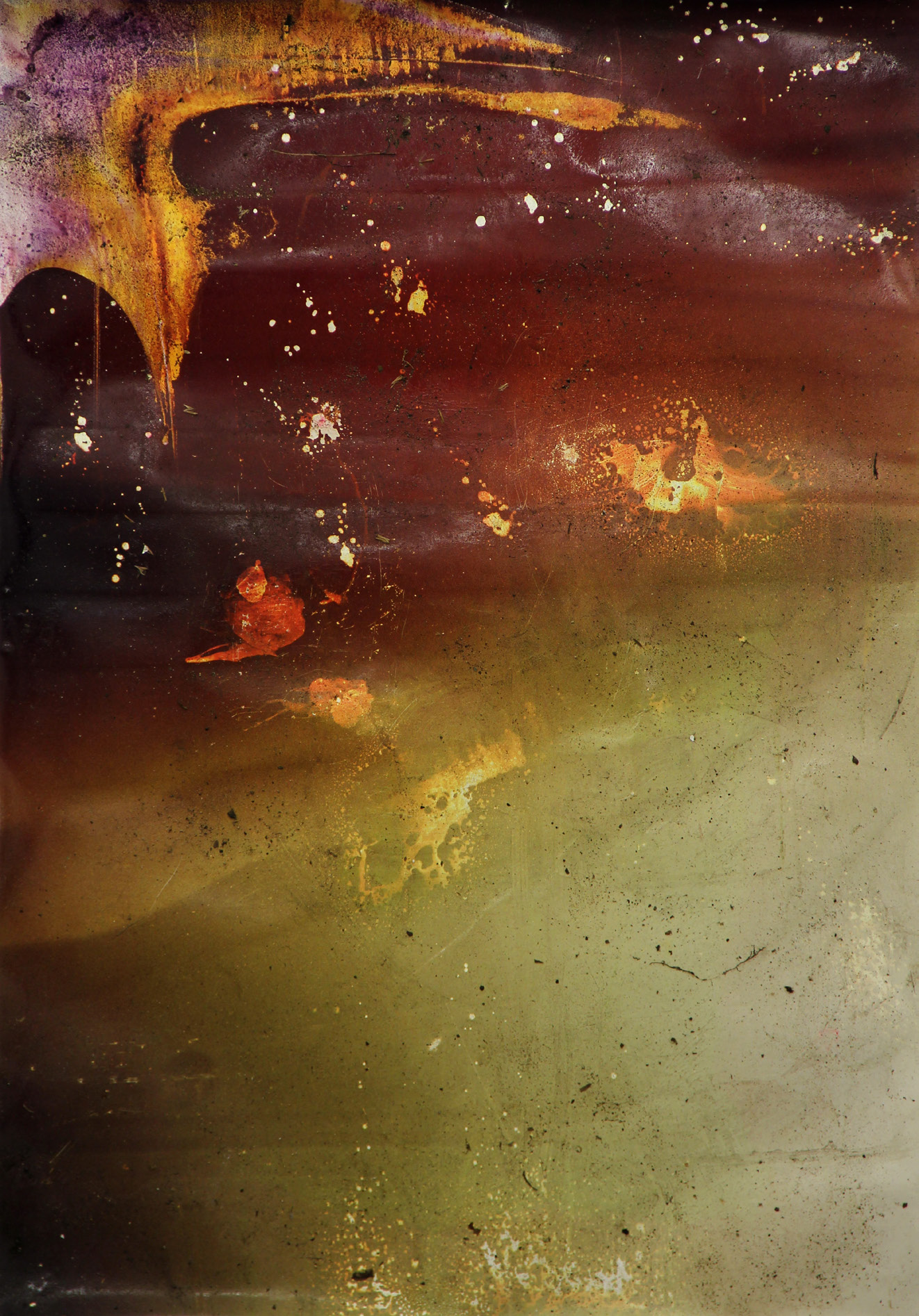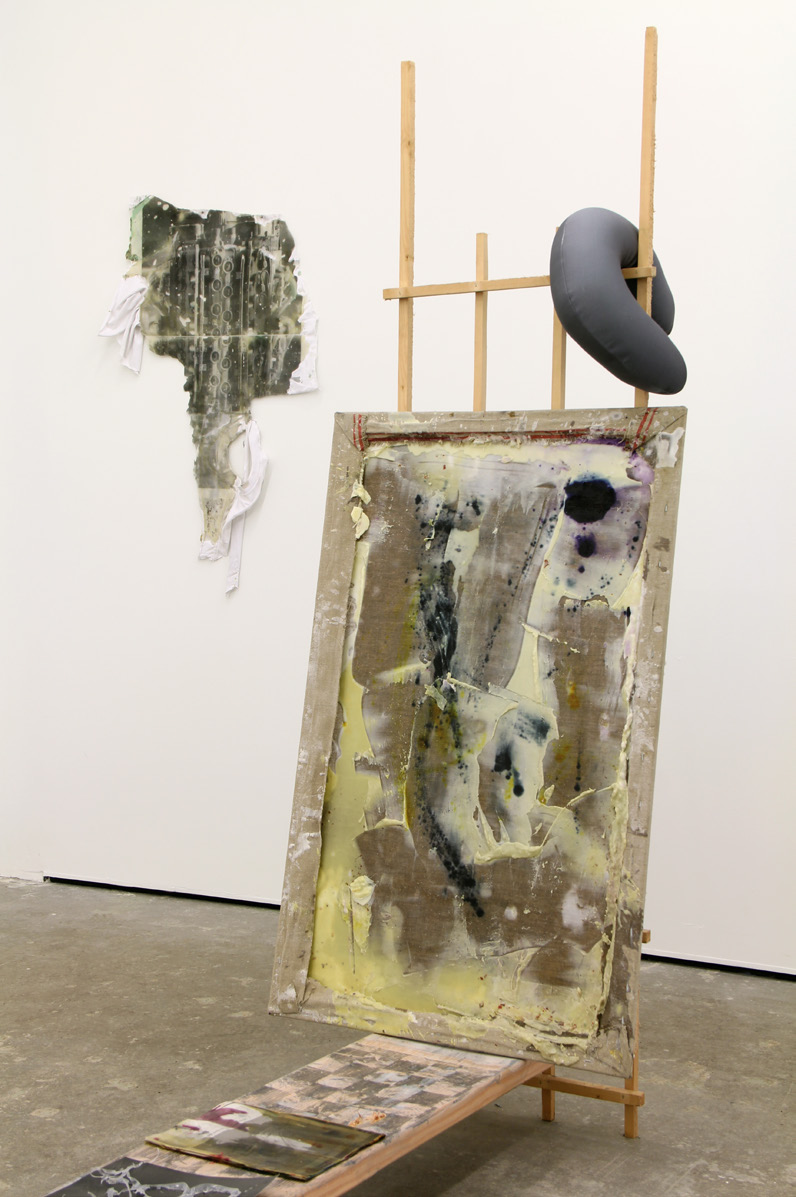Reviewed by Jonathan Thomas


“Sump Pump,” featuring work by Ryan Foerster and JPW3 (Patrick Walsh), seemed felicitous as a title for an exhibition given the fact that visitors had to cross a flooded parking lot, a black pool with a few cigarette butts floating on its surface, to get to the David Petersen Gallery for the opening. But this was a coincidence. What the show revealed is that two of the photographs Foerster put on dis-play were salvaged from Hurricane Sandy, after his studio in Brighton Beach was flooded. Whatever they were before, a disaster made them different, or remade them, and here they were hung as sculptural documents that sap the surface tactility of emulsion unmoored from its support and resettled, so that the sedimentation of the support becomes the image. Alongside Walsh’s work with wax, which when melted becomes a receptive surface for photographic transfers and material debris—there was something painterly going on as well, with drips and pours and skids of color—there was a material energy to this exhibition that reminded me of fly paper.

I guess you could say it wore its damage on its sleeve. Damage in the form of decay or corrosion—decomposition—appeared as a concern for both artists. In this setting, Walsh’s repeated use of the image of an engine, a Ferrari F1 V12 engine, had a ghostly effect. Read in relation to Foerster’s dented aluminum printing plates, or the semi-circular glass sculpture in the front window of the gallery, leaning as if it were a windshield retrieved from an old car, besmirched with dead leaves, torn paper and who knows? maybe dead bugs, the space as a whole had the ingredients of an accident. Photography, however, is often about accidents, and “Sump Pump” as an exhibition was often about photography.
Some of Foerster’s photographs were unburied before display. In the tradition of direct photography or direct cinema, the process he enacts on the photo-sensitive surface or its substitute, as evidenced here, is often physical. This ranges from photograms made in a darkroom to the prints and plates that had been buried outside or otherwise exposed to the elements in ways that called to mind the experiments of the Schmelzdahin Collective (Jochen Lempert, Jürgen Reble, and Jochen Müller), who worked in Bonn in the mid-1980s and made films from celluloid that had been buried or put under water or treated by other agents to expedite the process of material decay and to make that process of decomposition the basis of the work, which in turn was exhibited in projection.
Walsh’s painterly application of melted wax employs a parallel condition of decomposition; some of the pieces have a compelling sense of plasticity which results from the process of material transformation—the melting, which taps into the magic of metamorphosis—and the way that a surface, once resettled, can appear to freeze in a drifting motion to enfold the passage of time. The passage of time, whether measured by a kernel of popcorn that explodes into shape, or in the paper remains of a joint that was smoked, or in melted wax, is a concern that animates a number of Walsh’s works at a material level.
In the end it was the sheer materiality of the processes through which photography was explored that made this exhibition a notable experience. The informalism of “Sump Pump” could be read as a ruffed-up riposte to the precious or sanitized photograph (or exhibition) that either transcends its support or hides beneath it for the sake of smooth sailing through the commercial circuits. But then again, the physical abrasions and accidents that singularize these works do so precisely in order to make them—as if against their own logic—unique.












